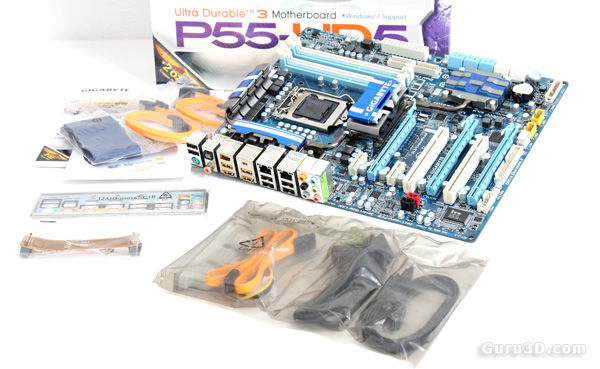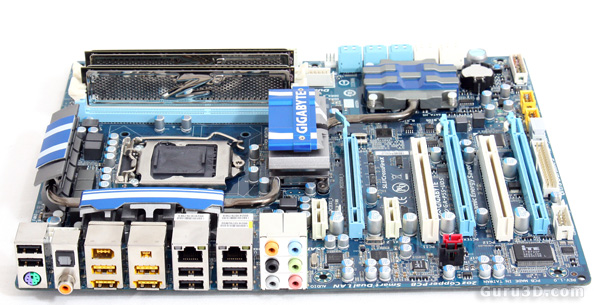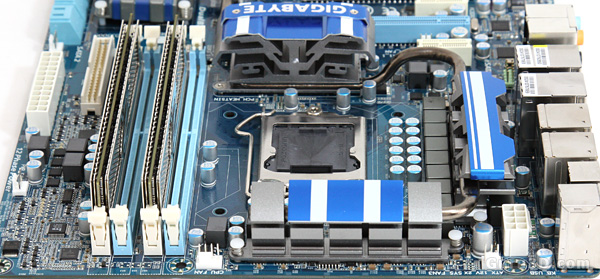Gallery - the P55 UD5 motherboard
Gallery - the P55 UD5 motherboard

Immediately after unboxing you will be impressed. That's a nifty looking feature rich motherboards alright. Nice blue PCB, blue'ish coloring scheme and the usual complementary products. Gigabyte always does it's bundle well and as such you'll find one heavy motherboard, a manual that explain every aspect of the board other than that you'll find a back I/O panel protector, an SLI bridge connector, various chassis stickers and also four S-ATA cables, an IDE cable and also an internal slot to add two more eSATA connectors to your machine.

We stated this already but expect the P55-UD5 to be found in the 189 USD / 175 EUR price range. The board has Gigabyte's classic design with the blue themed color scheme and the always blue PCB. But look at the connectivity on that toosh there, dang. Let's zoom in a little and focus on the back-panel connectors.

Check that out, from left to right that's a combined PS2 keyboard/mouse connector. Then I count a total of ten USB 2.0 ports with two integrated 2x eSATA/USB ports,Firewire, 2x Gigabit Ethernet. Digital audio in the form of coaxial and optical TOSLINK connectors, and then all the way to the right the analog audio connectors. Well, that certainly is a good start, that back panel is stuffed full to the last square inch.
Audio is managed by Realtek's HD audio chipset (ALC888S) by the way.

When we flip the board around we stumble into the processor area. We spot the 8-pin CPU power header located perfectly, ferrite core chokes and obviously the all new Socket 1156.
The board incorporates the latest Ultra durable philosophy that Gigabyte lately applies to all their motherboards. Meaning the board has all solid capacitor design with high quality parts from Japan. Also lower RDS MOSFETs, ferrite core chokes and lower ESR solid capacitors are used here. Ultra Durable 3 takes it up a notch and by using even better Japanese capacitors, said to last for 50,000 hours (almost 6 years of continuous use).
The biggest selling point about UD3, UD4, UD5 and UD6 (Ultra durable revision 3) is actually the fact that they now use two ounce copper layers in the PCB. This should lower temperatures inside the PCB, and that boils down to better lifespan, stability and overclocking. But enough on UD, let's check out the motherboard a little more up-close and personal.
